There are more great smartphones than ever before, but you won't find two more popular brands than iPhone and Galaxy. How do their latest flagships compare? Read on, as Gizmag goes hands-on with the iPhone 6 and Samsung Galaxy S5.
We think these are two terrific smartphones. If you're looking for someone to say that one is perfect, the other is garbage and there's one universal right answer for everyone, then you'll need to look elsewhere. Both are among the best smartphones of 2014, and each can make many people happy. The question is which one is better for you.
When comparing the latest iPhone and Galaxy flagships, screen size used to be an enormous advantage for Samsung. But with Apple giving the latest iPhones much bigger screens than their predecessors, it's less of an issue. At 4.7 inches, the iPhone 6 gives you 85 percent as much screen as the Galaxy S5 does:

You still get more screen from the GS5 (18 percent more, to be exact), but at least the iPhone is no longer living by a 2010-era definition of screen size.
... and if you still want more screen from an iPhone, you can always check out Apple's phablet, the iPhone 6 Plus. It stretches into a completely different category of phone, but the option for an enormous iPhone is there if you want it.
There were two advantages to the pre-2014 smaller iPhone screens. They fit easily in your pocket and hand, and they were easy to operate using one hand.
But the iPhone 6 does a good job of staying comfortable in hand and relatively inconspicuous in pocket. I don't see any cause for concern there. It is, however, a bit trickier to use with one hand, if you're making the upgrade from an older iPhone.
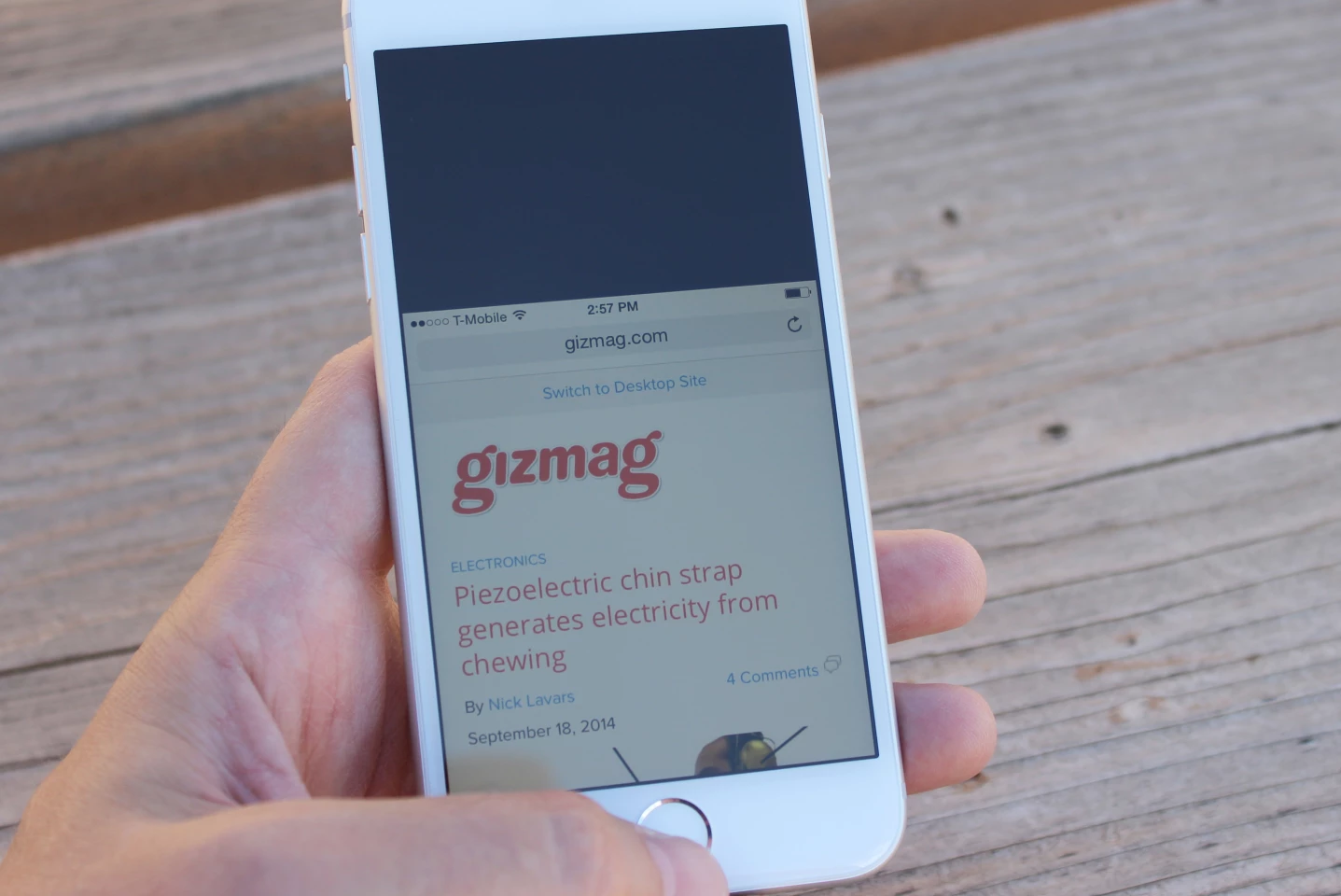
Both handsets have answers for one-handed use. On the Galaxy S5, a quick gesture shrinks the entire screen. On the iPhone, lightly double-tapping the Touch ID sensor slides top-level content down to the bottom (Apple calls this "Reachability").
I prefer Apple's approach for its smoother animation and for feeling like a more integrated part of the software (on the Galaxy, the one-handed shrinking doesn't always register the first time, and it also feels jerky). I do prefer Samsung's approach, though, for also shrinking the keyboard.
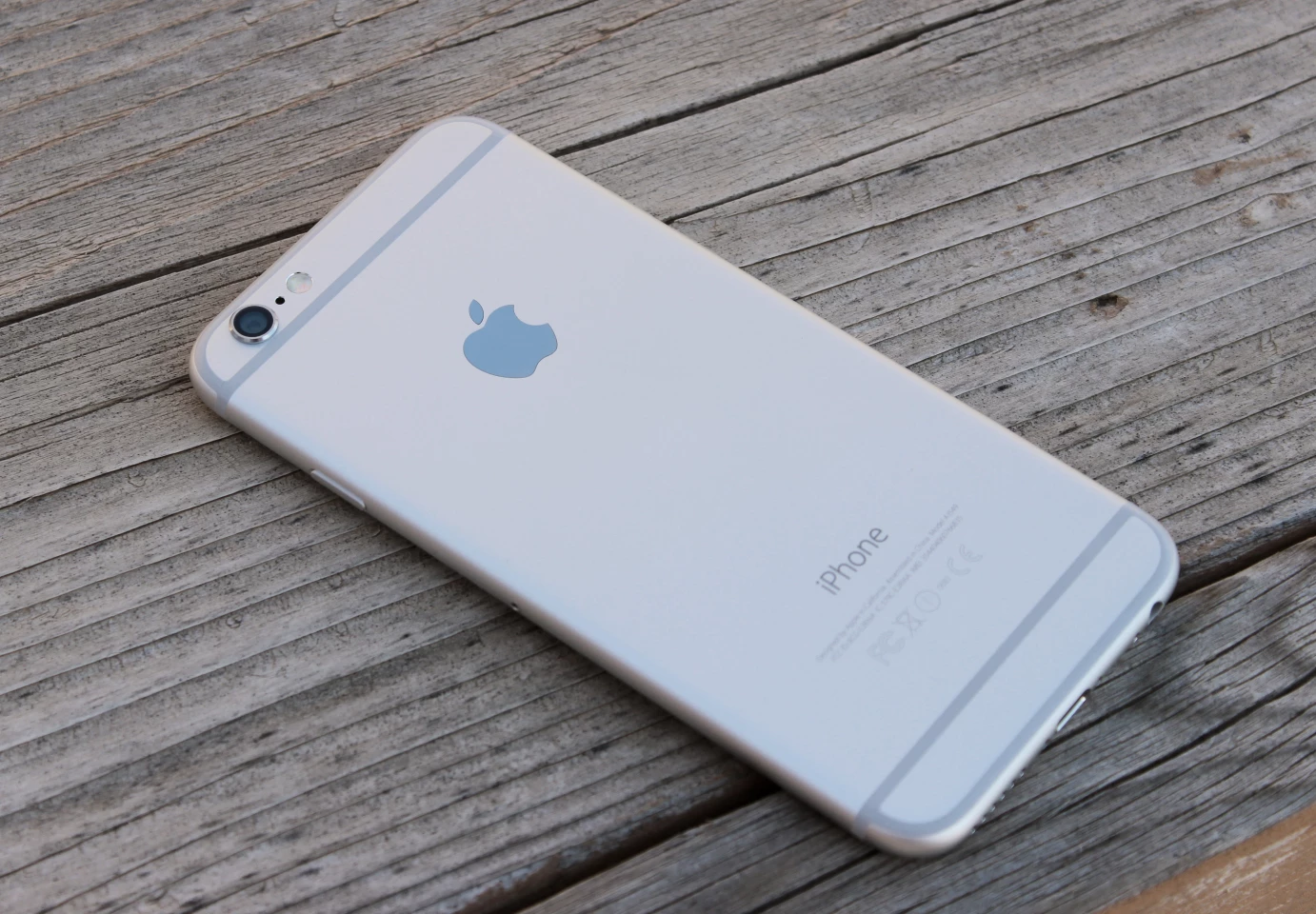
Build quality is a big advantage for the iPhone 6. This is probably the most beautifully-designed smartphone I've seen. Like all of Apple's recent products, it has an aluminum unibody construction. But this time Apple ditched the boxy and angular look, opting instead for rounded edges. The effect is astounding: it looks and feels smooth.
The Galaxy S5 has a dimpled plastic back and faux metal plastic edges. I don't mind the back part: it might look a bit odd, but its slightly soft-touch feel is comfortable in hand and it gives the phone a unique identity. That plastic band running around the edge, though, is a big minus. On the Galaxy Note 4, Samsung replaced this with real metal, and it makes a huge difference in feeling like you're using a high-end device.

Both phones get A's for screen quality. The GS5's is sharper (432 pixels per inch, compared to the iPhone's 326) and uses Super AMOLED technology for deep blacks and rich colors. The iPhone's screen, though, has terrific contrast, color accuracy and viewing angles.
I have no complaints about either screen, and I doubt you will either. There are more important areas to base your decision on.
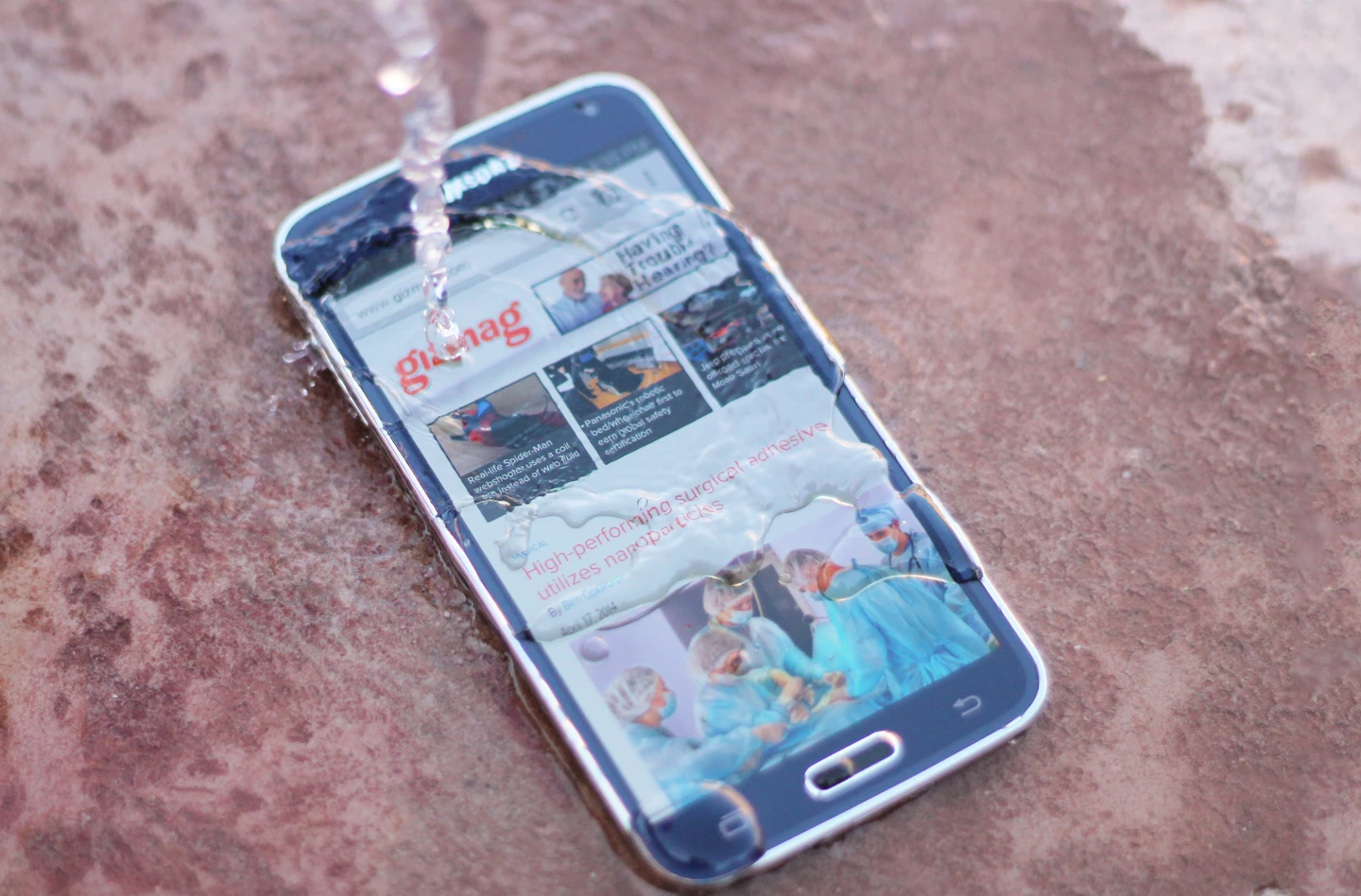
The Galaxy S5 is water-resistant, which, depending on how you use your phone, could be a big plus. If you like to soak in the bath or hot tub, for example, you can bring your GS5 along for the ride. You could also leave it poolside, and swim to the edge and check your messages (you don't want to take it swimming, though). And of course it's great insurance against accidental drops in sinks, puddles or toilets.
Not all fingerprint sensors are created equal. Both phones have them, but the iPhone's is much better. On the Galaxy S5, you have to swipe your finger across the home button. You can only swipe from one angle, and I sometimes have to repeat swipes. On the iPhone, you just hold your finger on the Touch ID sensor for a brief moment.
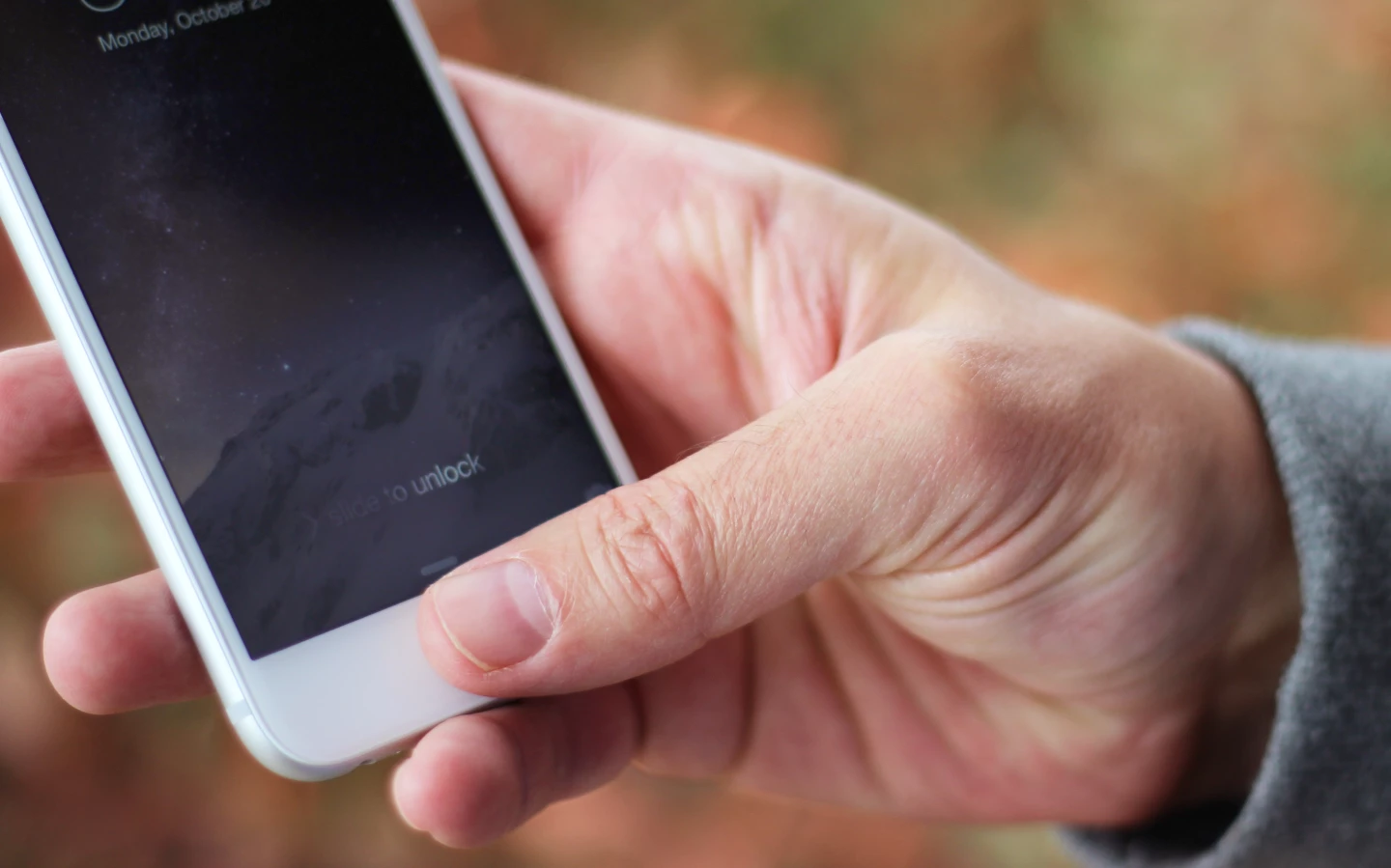
When the iPhone 5s launched, Apple's sensor was mostly hit, with some misses (especially after I'd been swimming). But after a year of software updates, Touch ID is damn near 100 percent accurate for me now. It's by far the easiest way to secure your phone – and now you can also use it with third-party apps. Password manager apps (Dashlane, 1Password, LastPass) are a perfect match for the sensor, and apps like Evernote and Dropbox also play nicely with Touch ID.
There is one area where Touch ID gets an "Incomplete." Apple Pay (branded as Pay) will let you buy goods at participating retailers by holding your finger over the sensor while hovering your iPhone near the pay terminal. Rival services have been trying for years to replace your wallet with NFC-based phone payments, but that never went quite as planned. Time will tell if Apple fares better (and stay tuned to Gizmag for more on Pay after it's completely rolled out).
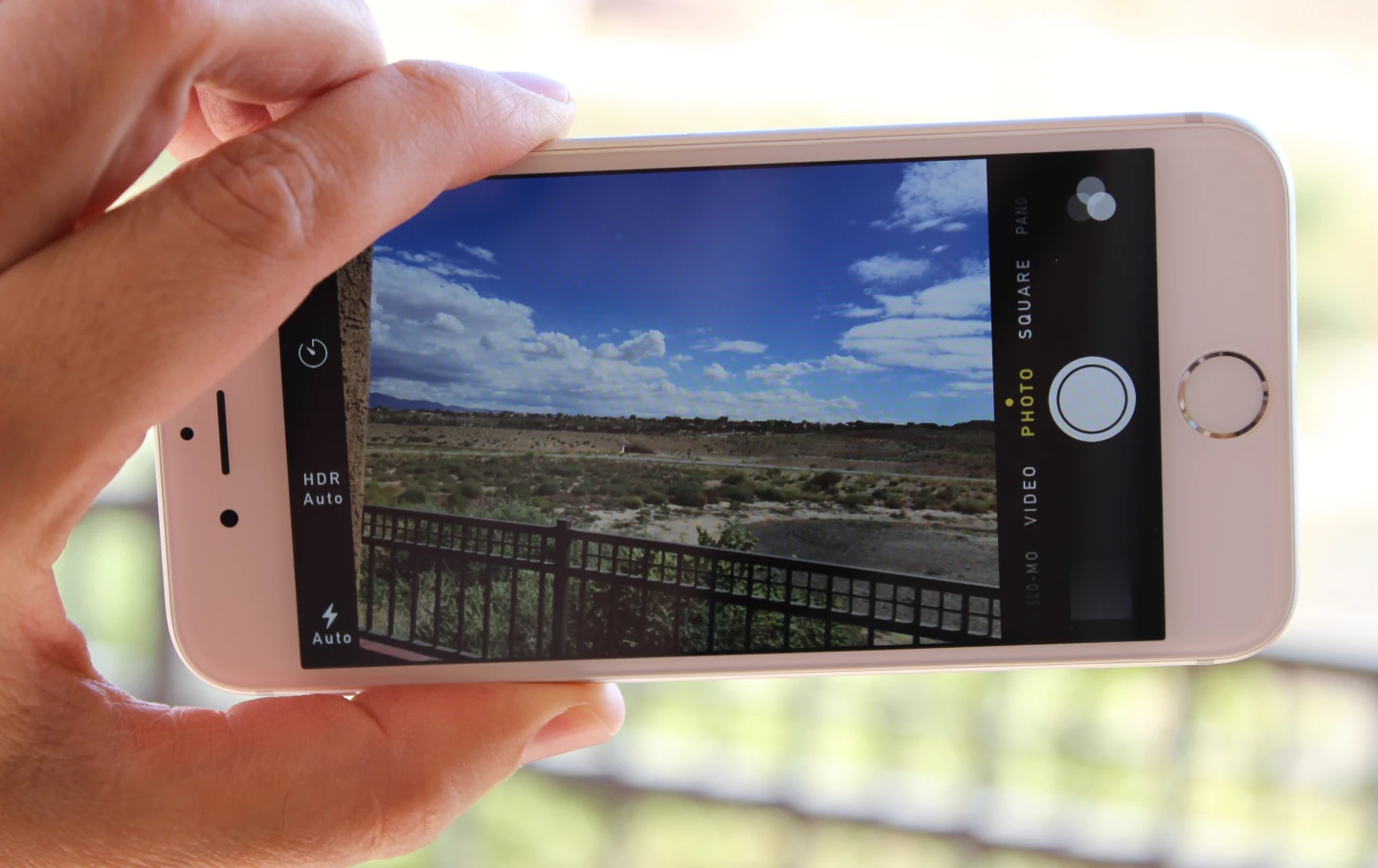
Both phones have great cameras, but I'd give the edge to the iPhone's. The GS5's takes higher-resolution photos, but even when zooming or cropping, I think the iPhone's shots look better. Generally speaking, the GS5's shots look very saturated, while the iPhone's capture more subtle nuances of color in all lighting conditions.
The Galaxy's camera is also annoyingly slow to fire up from the lock screen: on it I can go from locked screen to snapped pic in about 6 seconds, while on the iPhone it takes about 3 seconds.
The iPhone has a slow-motion recording mode that's terrific (it records in 720p at 240 fps). If you have pets or go to lots of sporting events, it's especially nice to have. The GS5 has a slow-mo mode too, but it looks grainy and choppy compared to the iPhone's. You also can't adjust which segments of the GS5's video are in slow-mo and which are in regular speed, like you can in Apple's version.
The iPhone also has the advantage in low-lit shots. I snapped some test pictures in a dark (and messy) closet, with the flash off. As you can see, the difference was, quite literally, like night and day:
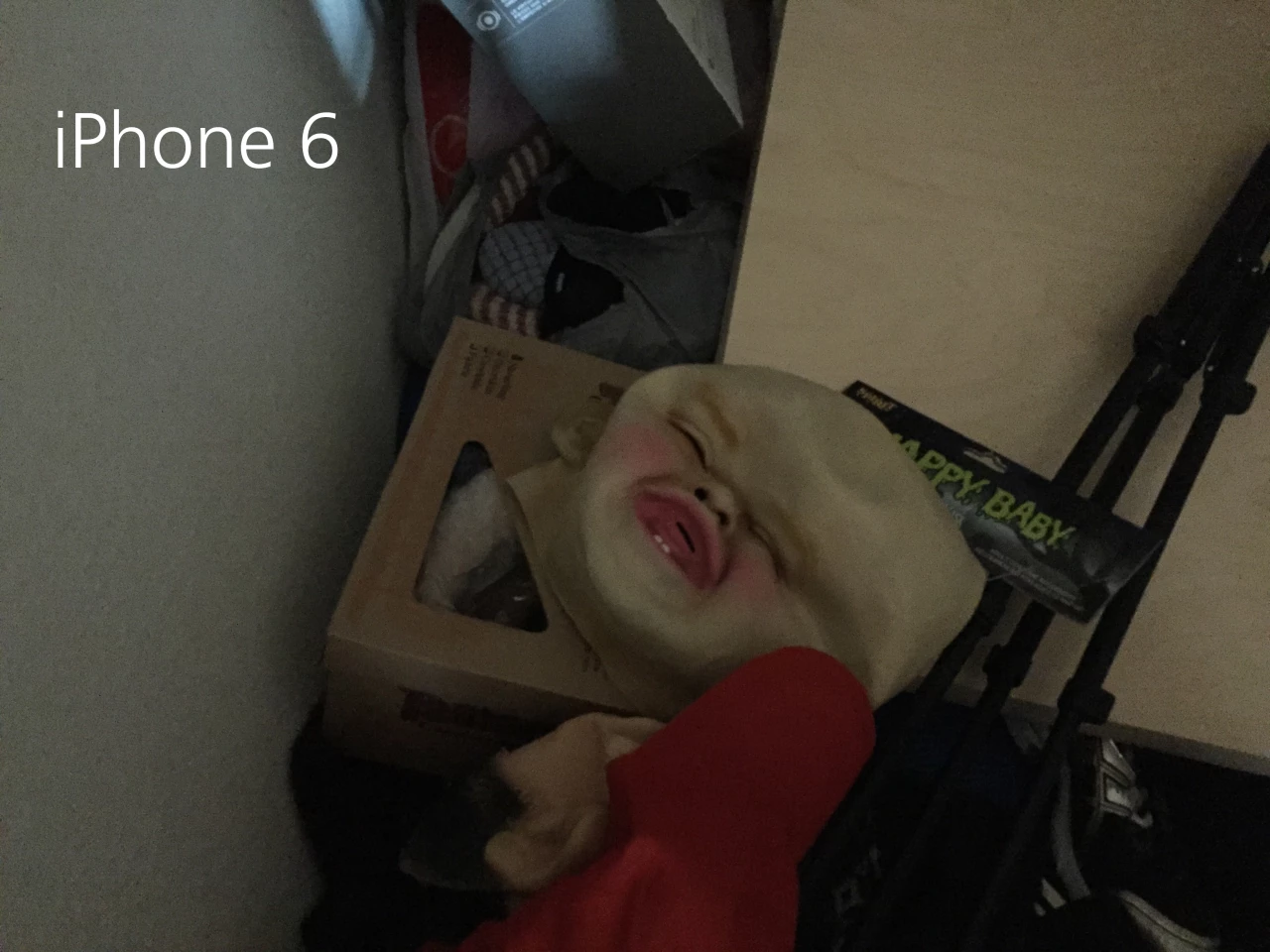
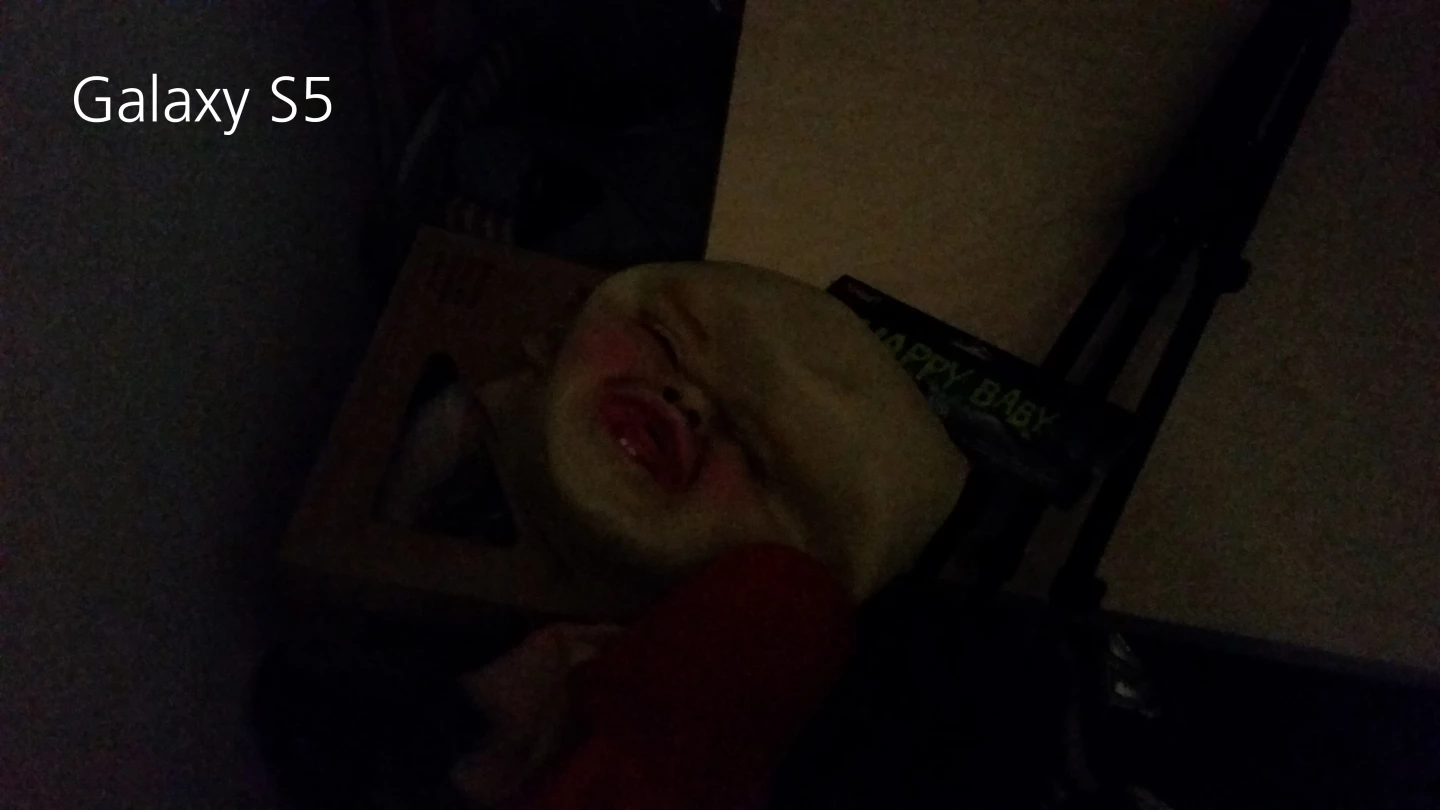
It's not that the Galaxy S5 has a bad camera. On the contrary, I'd say it's one of the five best smartphone cameras I've used. But, in my experience, the iPhone's is simply better.
Both phones have good battery life, but the GS5 has a leg up there. In our benchmark, where we stream video over Wi-Fi with brightness set at 75 percent, the Galaxy S5's battery dropped about 10.6 percentage points per hour, while the iPhone dropped about 14.4 percent per hour.
In regular experience, I've never had trouble getting through the day with the iPhone, but you can expect longer uptimes from the Galaxy.
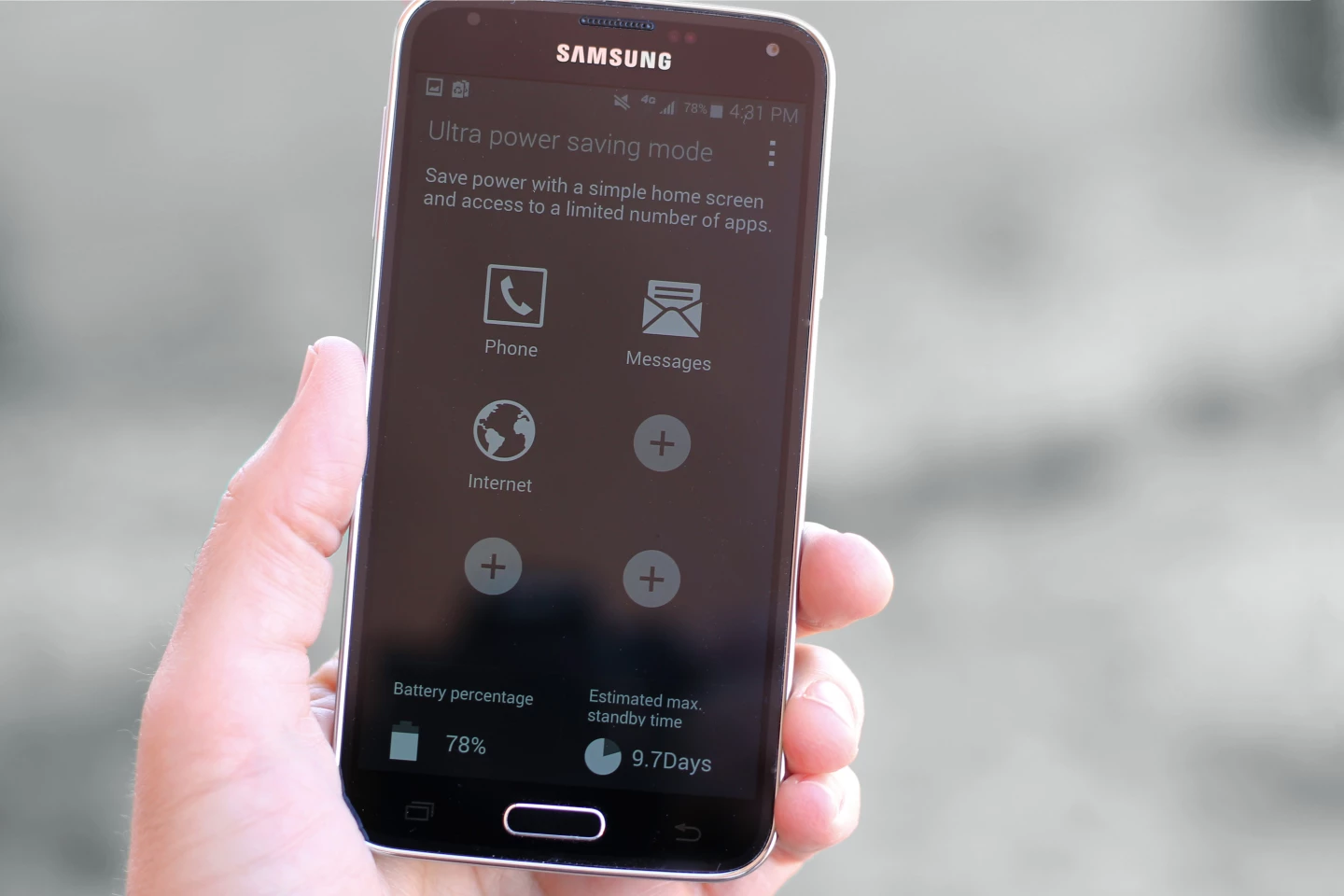
If you do get low on juice, the GS5 has a very cool trick up its sleeve. Ultra Power Saving Mode basically turns your expensive handset into a glorified feature phone, severely limiting available apps and turning its screen black & white. In this mode, it can turn 10 percent battery life into an extra 24 hours of uptime. Just toggle UPS Mode on when your phone is almost out of juice, and stay on the grid.
The GS5 also has a removable battery, while the iPhone's is sealed-shut. If you remember to a) buy a spare, b) keep that spare charged and c) keep it with you at all times (good luck with all of that), then it can give Samsung's phone yet another battery advantage over the iPhone.
If you like running two apps next to each other, then you might be interested in the GS5's Multi Window. I think this kind of split-screen multitasking works better on phablets and tablets than it does on standard smartphones like the GS5, but it's nice to have the option nonetheless. Just know that Multi Window only works with select apps.

So which phone is better? As always, that's going to depend on what you're looking for. Want a premium design, effortless fingerprint sensor and better camera? Go with the iPhone 6. Fancy a bigger screen, longer battery life and water resistance? Then the Galaxy S5 it is.
Either way, neither handset has any major weaknesses. We'll see gradual improvements in future versions, but either of these flagships could easily be your go-to phone for the next couple of years.
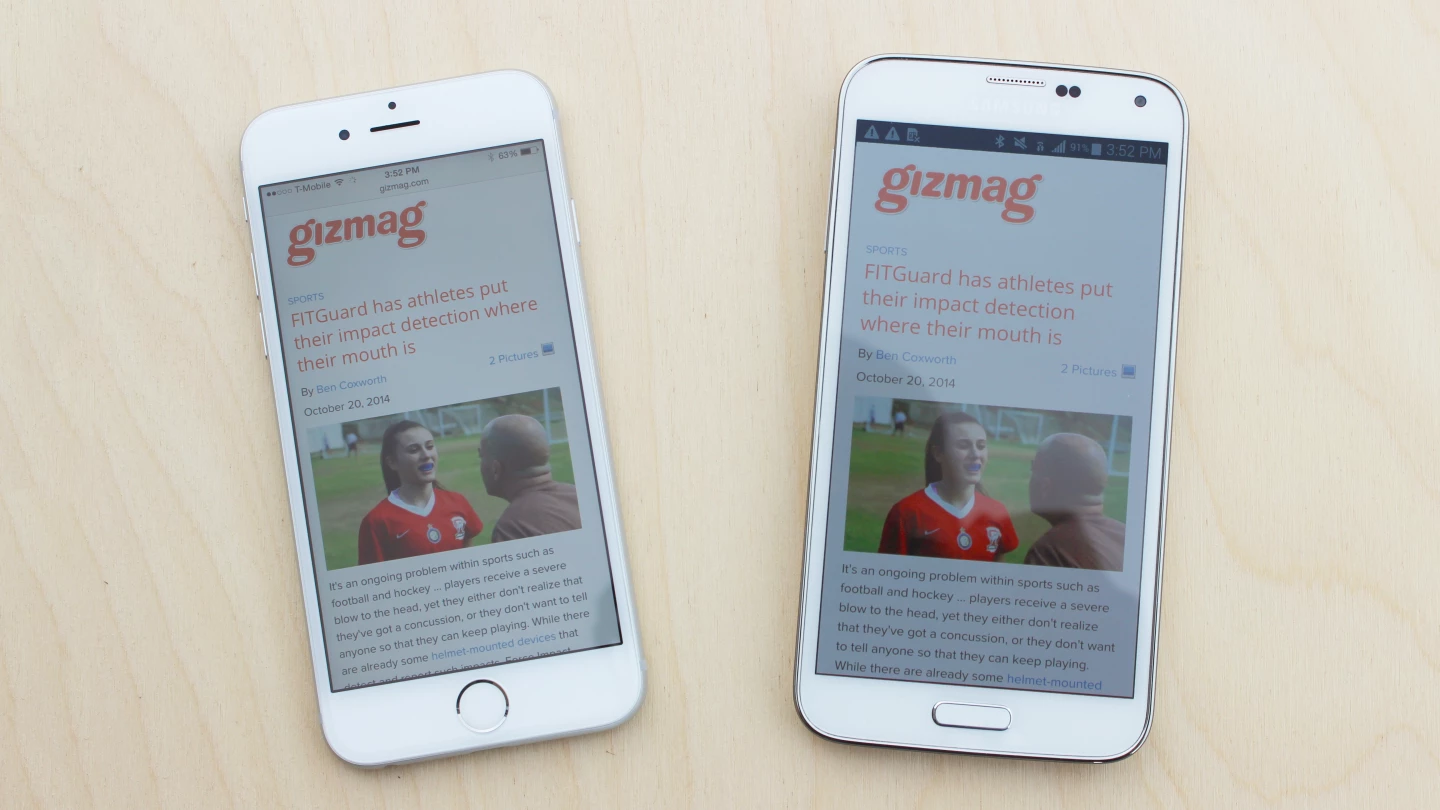
You're also looking at the same starting MSRPs for both: US$650 full retail, or $200 on-contract. You're more likely to see discounts on the six-month-old GS5, but you should be throwing down roughly the same amount of dough either way.
Still stumped? Then feel free to check out Gizmag's full reviews of the iPhone 6 and Galaxy S5. And if you're interested in either of their big brothers, there's also our iPhone 6 Plus and Galaxy Note 4 reviews.
... and if you aren't dead-set on these two, you can cast your net wider with our latest Smartphone Comparison Guide.








































